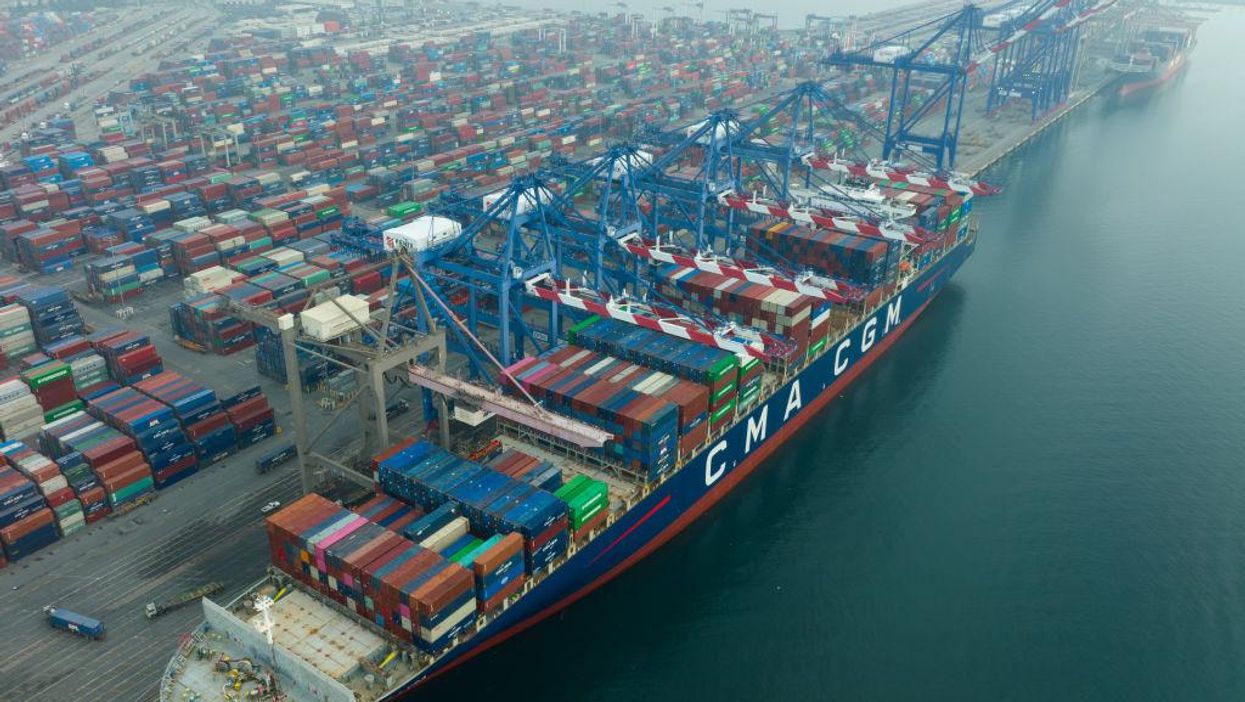
Qian Weizhong/VCG via Getty Images

The U.S. economy shrank in the first quarter of 2022, surprising economists and renewing fears that a recession is just around the corner amid high inflation.
Real gross domestic product, a measure of all the goods and services in the economy, decreased at a 1.4% annual rate in the first three months of this year, according to data released by the Bureau of Economic Analysis Thursday morning. This disappointing negative economic growth followed a GDP increase of 6.9% in the fourth quarter last year.
"The decrease in real GDP reflected decreases in private inventory investment, exports, federal government spending, and state and local government spending, while imports, which are a subtraction in the calculation of GDP, increased," the BEA report said.
A record-high trade deficit accounted for the largest hit to GDP, subtracting 3.2 percentage points from overall economic growth. Exports of goods fell sharply while imports of goods and services rose, showing that consumers are still spending but doing so on goods purchased from abroad. It's also the case that businesses are restocking inventory after supply chain disruptions last year, which may account for the increase in imports, economists told CNBC.
An increase in COVID-19 cases, continued pandemic restrictions and disruptions in some parts of the country, and a decrease in government spending on COVID-19 assistance programs each contributed to the decrease in GDP, according to the bureau.
There was some good news in the report. Personal consumption expenditures increased at a 2.7% rate. Of particular note is that spending on services increased from 3.3% last quarter to 4.3% in this quarter, showing that the U.S. is transitioning away from the pandemic economy, where people were buying goods like groceries, instead of spending money on services, like restaurants.
Business investment increased at a high 9.2% rate, with companies investing in equipment and intellectual property products, showing that U.S. businesses are still growing even though the overall economy shrank.
Still, negative economic growth is a step in the wrong direction for President Joe Biden and national Democrats, who are facing massive losses on Election Day based on voter dissatisfaction with the economy. While unemployment remains low, Americans say that higher prices caused by inflation are making it harder to buy gas, put food on the table, and afford to travel or spend money on entertainment.
While GDP may be revised upward next month when the BEA releases a second estimate for the first quarter based on more complete data, the fear for Democrats is that high inflation and slow economic growth would raise the specter of stagflation just before the election.
It remains to be seen whether the trade deficit and lingering effects of the pandemic are temporary drags on the economy, or whether inflation will cause long-term stunting of economic growth, triggering the next recession.